As a digital marketer, finding the right (digital) marketing strategies just keeps getting tougher. It’s a moving target out there – as soon as you find an approach that works, the online game shifts and your targets move on, leaving your online tools in the dust. Banner ads offer a good example. Once a staple in the digital marketer’s toolkit, banner ads have fallen sharply out of favor. It turns out that many millennials, both male and female, simply ignore all online banner ads. The impact of banner ads on other age groups is eroding too.
Some marketers go so far as to say that banner advertising is dead. Well, a brief tour around the internet will show you that this isn’t the case, but it is true that many internet users find banner ads annoying, intrusive and unhelpful.
So what are the digital marketing strategies that will keep you ahead of the curve?
Consider these 5 ideas to keep your digital marketing on target:
1. Blog more and blog better
Blogging is one of the most powerful lead generation tools you can use. But your blogposts have to contain useful, relevant, and high-quality content. If your blog posts are badly written, or don’t contain much useful information, they won’t be ranked highly on Google. And without a good ranking, you may as well not blog at all. Choose topics that are important to your targets, create an editorial schedule and make sure that your copy is compelling, fresh and inviting.
2. Hold more webinars and live events
Showcase the experts and expertise in your organization. It doesn’t cost a lot to put on a webinar, or create a podcast. It’s an inexpensive way to engage your different target groups. You could offer information sessions for prospects, or user tips for your customers. A live event will of course cost you more, but offers the opportunity to build face-to-face connections. For all types of presentations, your content has to offer real value, same as for blogposts. And with webinars, podcasts and live presentations, your speakers have to be energetic and engaging. Viewers will abandon the webinar, or tune out of a presentation, if they find a speaker boring. And the added value for webinars, podcasts and live events is that you can re-use the content in multiple ways, such as offering a full version or portions on your website, your YouTube channel, etc.
3. Improve your email marketing game
Email still offers a great return for B2B marketers. With marketing automation, you can stay in close contact with your prospects and customers, with targeted, customized emails that build and strengthen relationships, without spending a lot of money. Studies show that the ROI for email is higher than for most other marketing techniques. More than half the global population uses email, and it’s still the best way to quickly and easily reach your audiences with tailored messages. Of course, you need to make sure your email marketing complies with GDPR regulations.
4. Try native ads
This is the future of marketing, say many experts. Native ads look like the other posts on whichever platform they appear on. They might be labeled ‘promoted content’, or ‘sponsored post’, but their format matches that of the other posts that users see. So they’re not disruptive or annoying in the way that a banner ad can be, because they fit easily into the feed or stream that the user is viewing. The more closely they match the regular posts, the more successful they are at gaining eyeballs and clicks. Try a few native ads on the platforms where your targets are active.
5. Don’t forget social
Whatever social media platform(s) you’ve chosen for your marketing plan, you need to monitor all other social platforms just as closely. Your audiences are on social, and if they’re talking about you – or even worse, complaining about your products or your organization – you need to intervene and manage the conversation. The trick with social is to engage with all commenters, even the ones who are posting negative messages. But make sure your responses are respectful, informative and helpful, no matter how aggressive your commenters might be. You don’t want to start a public argument that you won’t win.
Want to learn more about digital marketing for B2B?
Sign up for our Infusinar on Sept. 27, on How to Create a Knockout B2B Brand.
Branding in the inbound marketing age means branding on the internet—and the internet moves pretty fast. Brands can be built up in an instant, and destroyed just as quickly. Companies need to be more active, more vigilant, and more knowledgeable than ever to achieve maximum return on the investment it takes to establish a knockout brand.



